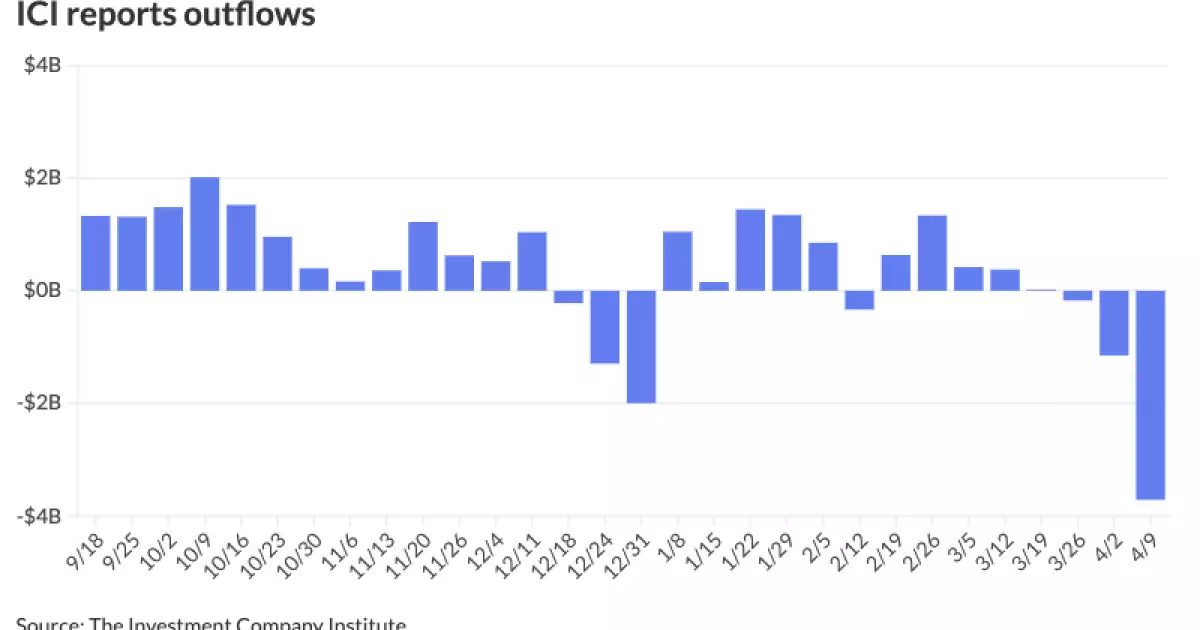The municipal bond market is presenting a rather curious yet promising scenario for investors, as the sharp market volatility from last week seems to fade into the background. As U.S. Treasury yields decline and equities feel the weight of selling pressure, certain dynamics within the municipal space are emerging that could change the investment landscape. After facing a wave of previous outflows, totaling over $3.7 billion according to the latest Investment Company Institute report, one might have expected a complete downturn. Instead, recent firming reveals a market that is once again gaining its footing – and that’s noteworthy for both seasoned and new investors alike.
Kim Olsan, a senior fixed income portfolio manager, comments that the recent price gains indicate a shift in momentum, suggesting that institutional bidders are now eager to capitalize on the yield dislocations that earlier seemed daunting. With the 30-day Bond Buyer visible supply amounting to approximately $18.62 billion, one can only wonder if we are witnessing a remarkable turnaround or a simple lull before the next storm.
Rallying Demand and Robust Transactions
With competitive sales attracting strong responses, we see evidence that the municipal bond market is better positioned than it was days ago. Significant issuer transactions, like North Carolina and Anne Arundel County, are drawing levels that signify keen competition among buyers, bringing yield disparities back into play. Notably, these sales reflect bids near or at parity with their AAA reference spots – a stark contrast to previous weeks, where deficits reached 20 basis points or more.
As new issuances loom on the horizon, one can’t ignore the extraordinary potential for large-scale financing, particularly in high-rated bonds exceeding $1 billion from states like Connecticut and Massachusetts. The willingness of buyers to engage in such larger transactions indicates a revival of confidence in municipal performance and credit quality that many hedge funds and retail investors should be analyzing closely.
Market Dynamics and Risk Tolerance
Discerning investors should remain alert to the intricacies of the current market landscape. While secondary flow values remain elevated, averaging $12 billion trades daily, the quality distribution within these transactions appears to be grinding toward safer options. The fact that AA-rated bonds now account for about 55% of all trades emphasizes that there’s still a cautious propensity among investors.
Moreover, as money fund redemptions intensify leading up to tax deadlines, ultra-short yields are becoming exaggerated. The strategic investor must appreciate how these circumstances shape the yield curves for various maturities. With one-year yields breaching 3.00%, creating a tax-equivalent yield akin to 5.00% for top-income earners, there’s an observable shift toward navigating credible yield opportunities that may eventually prompt a race back into the municipal bond market.
Yield Curves and Comparative Ratios
This month’s municipal yield curves offer more than just numbers; they are a reflection of investor sentiment and broader economic considerations. The current five-year muni-UST ratio rebounded to about 80%, considerably up from a year low of 58%. In a venue where relative values yielded rates in the 80% range, investors should be cognizant of these shifts as they create tactical openings.
High-ranked bonds at the edge of this curve, notably high grades, exhibit sharp corrections of 110 basis points. For income-oriented investors looking for safer haven assets, the opportunity to capitalize on these normalized rates could be compelling.
As yields for bonds with lower coupon rates push above 4.75%, and structures like Texas Water 4.25s trading higher still, we see ample evidence suggesting that risk tolerance is starting to return in favor of bonds with fewer inherent risks. This is a sign that perhaps the market stabilizes, with investors reassured amidst turbulent monetary conditions.
CUSIP Requests and Market Participation
It’s intriguing to note the contraction in CUSIP requests for new securities, capturing a minor decline of 1.1% from February’s totals. The fluctuations in issuance signal a re-evaluation among issuers. It brings forth the question of whether demand will invigorate by mid-year or if this trend will persist.
Despite this minor setback, the year-over-year volume remains up by over 11%, indicating that while issuance might be facing a slight stall, the appetite for quality municipal debt continues to rise significantly.
In a world where political and economic tensions shape investment choices, the municipal bond market’s trajectory deserves closer examination. The revitalization potential within this segment could prove beneficial for investors seeking yield along with a semblance of safety. For those inclined to think critically, this market shift invites engagement rather than detachment, as it could pave the way to innovative investment strategies.

